Optoma ThemeScene HD83 Review
Optoma ThemeScene HD83
With its aggressive price and specification, is Optoma’s HD83 3D projection’s new mass-market champion?
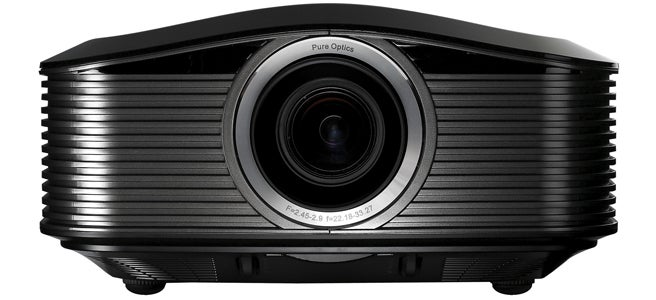
Verdict
Pros
- Minimal crosstalk with 3D
- 3D glasses work very effectively
- Bright pictures look excellent
Cons
- Problems showing shadow detail
- Not as much vertical shift as we’d have liked
- 3D transmitter cable too short
Key Specifications
- Review Price: £2399.99
- DLP projector
- Active 3D playback
- Two pairs of 3D glasses included
- Frame interpolation processing
- RF 3D glasses technology
Things are really heating up in the world of 3D projection. At the time of writing, we’ve recently seen excellent new 3D projectors from Sony and Panasonic, we’re about to take delivery of Sim2’s new Nero 1 3D model, Epson’s new remarkably cheap 3D models are inbound in the next couple of weeks, and JVC’s second generation of 3D projectors are due by the end of November.
And then there’s Optoma. The brand has announced two new 3D projection models with remarkably affordable prices: the £2,400 HD83 and the £1,350 – yes, £1,350 – HD33. The HD33 will be getting our attention soon. But on our projection stand right now is the HD83, which we’re hoping will deliver mid-range 3D thrills at a less than mid-range price…
The HD83 is passably easy on the eye. Its elongated shape and quite large footprint make it quite distinctive, as does the way the top panel curves round to follow the shape of the centrally mounted – and promisingly large – lens. Its matt black finish looks and feels plasticky, though, and we’ve never been particularly great fans of the sort of ‘ribbed’ finish used down the HD83’s sides and front.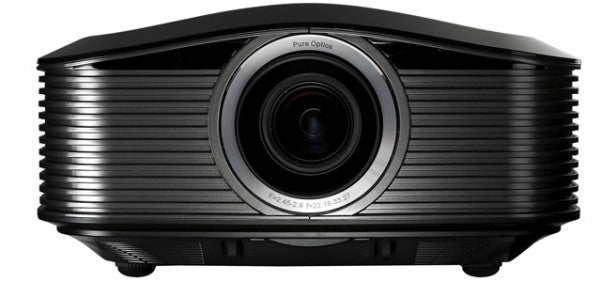
The one good thing about the gloss-free black finish is that the projector pretty much ‘disappears’ when installed in a darkened projection room.
Under a long overhang on the HD83’s rear can be found a more than acceptable collection of connections. The two HDMIs are built to the v1.4 specification for full HD 3D compatibility, while other highlights include a component video port, a D-Sub PC port, two 12V trigger ports, and an RS-232 socket to aid integration of the HD83 into a separate control system.
One final, telling jack is a DIN socket for attaching the projector’s 3D Sync transmitter. Which means, of course, that the HD83 does not have a 3D transmitter built in. This isn’t necessarily a big deal, though – especially as the transmitter itself is unfeasibly small and is provided free of charge. Our only complaint would be that its cable is very short, limiting your placement options.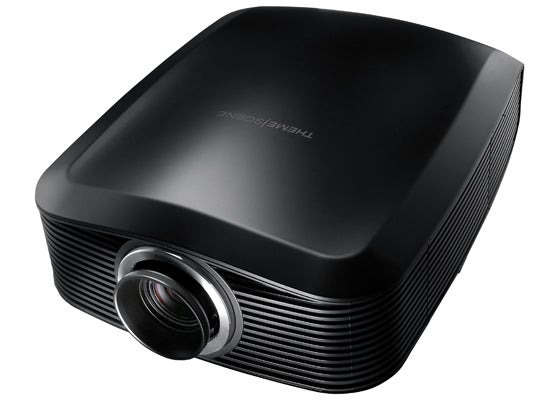
Intriguingly, the transmitter and Optoma’s active shutter glasses – two pairs of which are included with projector – use RF technology rather than the usual Infra-Red system. This proves an astute move, as during our tests the sync signal remained rock solid from start to finish, even if we moved around the room.
The glasses are rechargeable using a provided USB cable, enhancing the HD83’s value potential even further.
The HD83’s spec sheet reads pretty respectably for what’s currently the cheapest full HD 3D projector we’ve seen. Its contrast, for instance, is quoted at 50,000:1 using the projector’s iris adjustments, or a very respectable 700:1 ‘native’. Perhaps even more important, at least where the HD83’s 3D aspirations are concerned, is its fairly impressive quoted brightness output of 1600 ANSI Lumens, which should prove handy in combatting the inevitable dimming effect of the active shutter glasses when watching 3D.
The projector is also reckoned to only produce 22dB of running noise – though it should be stressed that this figure applies to the projector in its ‘Standard’ mode only, where the lamp is running at a reduced brightness level. The running volume certainly jumps when the lamp’s pumped up for 3D viewing, though provided you avoid the projector’s Image AI lamp setting (more on this later), it remains a smooth sound and so shouldn’t distract much unless you happen to be sat right next to the projector.
Attempting to set the HD83 up reveals – after some hunting! – the presence of wheels rather unhelpfully sited under a ledge beneath the lens that you can use to shift the image vertically or zoom the image optically across a solid range of throw ratios. It has to be said, though, that these wheels aren’t very precise, and that the vertical shift doesn’t allow you to shift the image very far downwards at all. This could cause a problem for people seeking to place the projector on a high shelf at the rear of a room.
Judging by some of the features contained within the HD83‘s clean and clear if not particularly exciting onscreen menus, Optoma is out to appeal to the enthusiast’s market with the HD83, despite its relative affordability. There’s a satisfactory colour management system, for a start, via which you can adjust the ‘x and y’ offsets as well as the relative brightness levels of all six of the main colour elements. There are also manual colour gamut and temperature adjustments (the latter of which includes a reasonably accurate D65 video standard mode); gain and bias adjustments for the RGB colour settings; and a series of Gamma presets along with further curve type and offset fine tuners for each preset.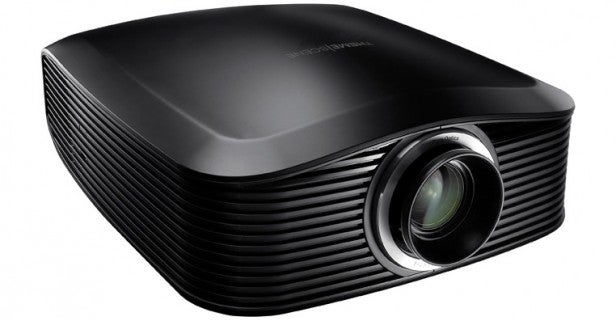
The colour gamuts available include the Rec709 HDTV system, EBU, DLP Cinema, SMPTE-C and Native, giving pro installers a pretty decent ‘toolkit’ of calibration starting points.
Potentially more controversial is the HD83’s PureEngine. This is a video processing system comprising three elements: PureDetail, PureColour, and PureMotion. These are to some extent self-explanatory, but with video processing engines tending to inspire dread among video fans, they definitely won’t suit everyone. For us, we turned off PureDetail, left PureColour on its 1 setting, and found ourselves fluctuating between turning PureMotion off and setting it to 1 depending on the content we were watching.
Given that it’s the HD83’s offering of full HD 3D projection at a new, low price point that gives it its headline appeal, it’s with 3D that we started our tests – initially using a set up configuration supplied to us by email from Optoma. It’s a pity Optoma didn’t include these settings as a 3D preset on the projector, perhaps, rather than just telling us what settings they’ve found to work the best. But there you go.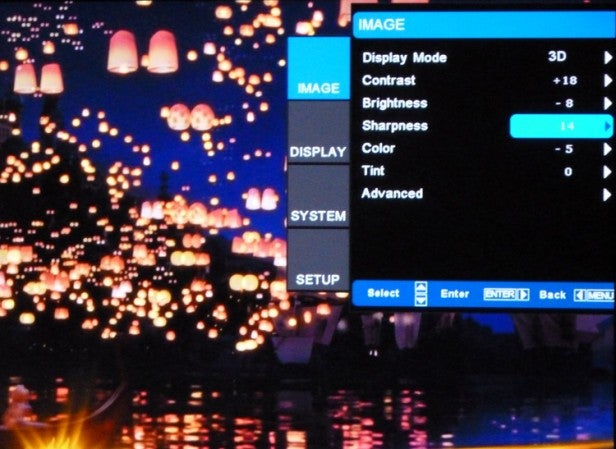
The settings suggested, for the record, were: Contrast 18; Brightness -8; Sharpness 14; Colour 2; Gamma Standard (but with Curve Type and Offset reduced to -1); PureDetail 2; PureColour 2; Motion Low; Colour Temp D65; Bias Zero; Space Native and 3D mode VESA 3D. But while we’re onboard with some of these settings, we certainly didn’t think the colour ones looked right, leaving colour saturations so over-wrought they actually made the picture look less detailed.
The quickest solution to this was to reduce the colour setting to -5 or -6, at which point colours looked instantly more credible and detailed – especially with skin tones. That said, the image still didn’t look grandstandingly sharp, especially when asked to deal with a lot of motion.
Turning the PureMotion system up improved 3D motion clarity, but left the image looking rather unnatural and ‘video like’ – though we were impressed by how few unwanted digital side effects the processing caused.
No matter what settings we tried, though, dark 3D scenes on the HD83 looked startlingly dull and, more worryingly, devoid of shadow detail. This means dark shots like the one where Mother Gothel tries to cover the ‘sun flower’ near the start of Tangled really lose 3D depth and, looking more like a few light image element ‘holes’ have been torn out of a flat piece of black card, rather than the natural 3D images they’re supposed to be. 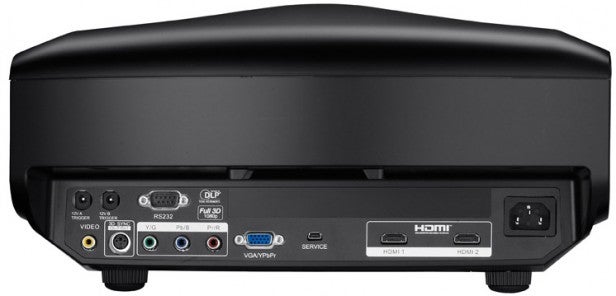
The HD83 does have one significant 3D advantage up its sleeve, though: minimal crosstalk. For while you can see traces of the tell-tale double ghosting from time to time – such as a slight ‘shadowing’ around the castle of Disney’s new 3D studio title sequence – it’s seldom seriously distracting.
Personally, though, we actually found the HD83’s difficulties with squeezing any ‘life’ and detail out of dark 3D scenes more distracting than the slightly higher crosstalk levels found on, say, the Sony HW30 or Panasonic AT5000.
The HD83’s 2D performance varies between outstanding and slightly disappointing, depending on what image content is showing. Where it’s outstanding is with mostly bright, colourful HD footage, with which it produces a terrific amount of ‘pop’ and dynamism for such an affordable 3D projector. After a little calibration, colours from all corners of the spectrum are driven out with real vigour, along with with an evenness of hand that stops certain hues from looking too dominant.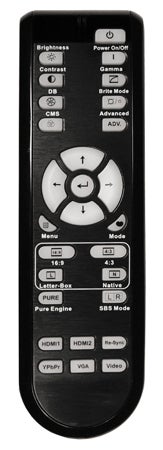
In fact, colour tones are generally extremely natural, coping equally well with everything from the extremely tricky and varied skin tones of Casino Royale to the vibrancy of an HD Disney animation.
The HD83’s HD pictures are also sharp and detailed, without over-egging things to the point where noise takes over or edges start to look stressed. The HD83 looked more assured with motion than it was in 3D mode too.
The HD83 does have a 2D weakness, though. Which is that dark scenes don’t look nearly as confident as bright ones, chiefly because the projector again struggles to deliver a totally convincing black level response. There’s a slightly grey look to dark areas even after calibration, and worse, as with dark 3D scenes, there’s a clear lack of shadow detail.
It’s no surprise from this that the HD83 really stuggles with our contrast-related Pluge test signal. In fact, as with the recently tested Optoma HD87, the HD83 only just managed to show the left-hand ‘cog’ on Gears of War 3’s extremely basic brightness setting test screen, even with the game’s brightness slider set to its highest point. A point at which, sadly, bright scenes looked gaudy and ‘flared’. 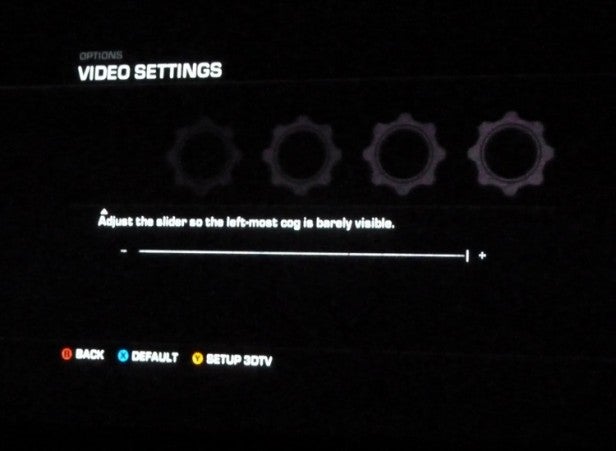
We tried tinkering with a provided DynamicBlack processor and the Image AI lamp option (which adjusts the light output according to the needs of any given image frame), but DynamicBlack caused too much brightness ‘jumping’ while the Image AI system caused the projector to produce audible iris adjustment sounds that could be quite distracting during quiet scenes.
Ultimately, then, you either have to choose pictures that look over-saturated and over-bright but have at least a small amount of shadow detail, or else you have to go for accurate colours and natural brightness levels but sacrifice almost all shadow detailing. Or pick a compromise in the middle.
Verdict
Ultimately the HD83 is a bit of a disappointment. Sure, it gets some things impressively right: 3D crosstalk is minimal, and bright pictures in 2D and 3D mode look absolutely excellent for the HD83’s money.
But the projector’s problems with retaining any shadow detail during dark 2D or 3D scenes are a consistent and sometimes distracting flaw that we never managed to work round to our full satisfaction.
Trusted Score
Score in detail
-
Value 7
-
2D Image Quality 7
-
Features 9
-
3D Image Quality 7
-
Design 7
Features
| Native Aspect Ratio | 16:9 |
| Projector Type | single-chip DLP |
| Brightness (Lumen) | 1600lm |
| Contrast Ratio | 50,000:1 peak, 700:1 ANSI |
| Full HD 1080p | Yes |
| 3D Ready | Yes |
| Lamp Type | UHP |
A/V Ports
| HDMI | 2 (v1.4) |
| Component | 1 |
| Composite | 1 |
Physical Specifications
| Height (Millimeter) | 194mm |
| Width (Millimeter) | 372mm |
| Depth (Millimeter) | 490mm |
| Weight (Gram) | 8.4g |

